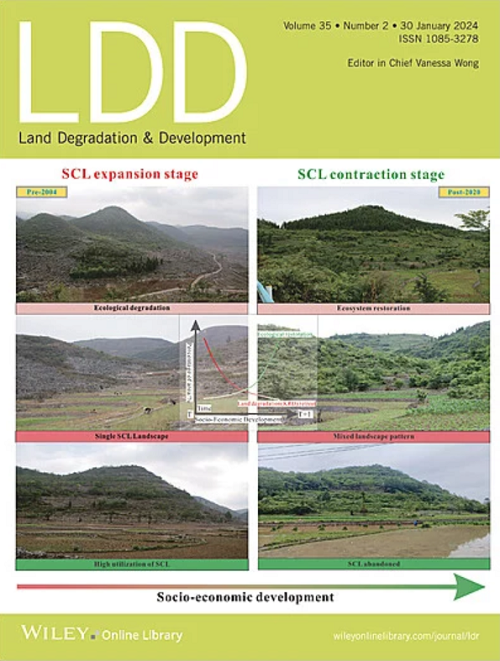区域生态规划的多目标框架:修复优先级分析
IF 3.6
2区 农林科学
Q2 ENVIRONMENTAL SCIENCES
引用次数: 0
摘要
生态系统管理举措远未实现可持续发展目标,生态系统退化严重限制了保护效率。本研究提出了一个多目标的生态恢复框架,以补充现有的保护区,并确定优先恢复区域,以提高资源限制下的有效性和可持续性。以黄土高原典型生态脆弱县域为研究对象,对生态系统服务功能进行评估,并应用OWA模型进行目标保护区的划分。在此之后,根据区域保护要求建立了恢复目标,并伴随多目标框架和相应场景的发展。这些方案旨在最大限度地提高保护效率,提高生态重要性和景观连通性,同时最大限度地减少人类活动的影响。最后,构建了区域生态安全格局,明确了修复源、廊道和屏障,并将修复区域划分为4个层次。主要研究结果表明,在假设目标下,三种情景分别提供了最高的权衡和保护效率。生态环境指数较高、人类活动较少的地区占总面积的三分之一,其恢复成本较低。修复重点覆盖15.25% ~ 26.83%的研究区,在农业区和建设区确定了8 ~ 19个屏障,强调了土地利用向森林或草原转变的必要性。这些发现为协调生态保护与社会经济需求提供了可行的策略,强调了分层保护和有针对性的干预措施对提高恢复效果的重要性。本文章由计算机程序翻译,如有差异,请以英文原文为准。
A Multi-Objective Framework for Regional Ecological Planning: Restoration Prioritization Analysis
Ecosystem management initiatives remain far from achieving sustainable development targets, with degraded ecosystems significantly limiting the protection efficiency. This study proposes a multi-objective framework for ecological restoration that complements existing protected areas and identifies priority areas for restoration to enhance effectiveness and sustainability within resource constraints. Focusing on a representative ecologically fragile county on the Loess Plateau, this study assessed ecosystem services (ESs) and applied the Ordered Weighted Averaging (OWA) model to delineate targeted protection areas. Following this, restoration objectives were established based on regional conservation requirements, accompanied by the development of a multi-objective framework and corresponding scenarios. These scenarios aimed to maximize protection efficiency, improve ecological importance and landscape connectivity, while minimizing human activities impacts. Lastly, regional ecological security patterns were constructed to identify restoration sources, corridors, and barriers, as well as prioritize restoration areas into four levels. Key findings revealed that three scenarios offered the highest trade-off and protection efficiency, respectively, selected as targeted protection areas under the hypothetical objectives. Regions characterized by higher ESs and lower human activity, encompassing one-third of the total area, exhibited lower restoration costs. Restoration priorities covered 15.25%–26.83% of the study area, with 8–19 barriers identified in agricultural and construction zones, emphasizing the imperative for land-use conversion to forests or grasslands. These findings provide actionable strategies for harmonizing ecological conservation with socio-economic imperatives, highlighting the importance of tiered protection and targeted interventions to enhance restoration effectiveness.
求助全文
通过发布文献求助,成功后即可免费获取论文全文。
去求助
来源期刊

Land Degradation & Development
农林科学-环境科学
CiteScore
7.70
自引率
8.50%
发文量
379
审稿时长
5.5 months
期刊介绍:
Land Degradation & Development is an international journal which seeks to promote rational study of the recognition, monitoring, control and rehabilitation of degradation in terrestrial environments. The journal focuses on:
- what land degradation is;
- what causes land degradation;
- the impacts of land degradation
- the scale of land degradation;
- the history, current status or future trends of land degradation;
- avoidance, mitigation and control of land degradation;
- remedial actions to rehabilitate or restore degraded land;
- sustainable land management.
 求助内容:
求助内容: 应助结果提醒方式:
应助结果提醒方式:


